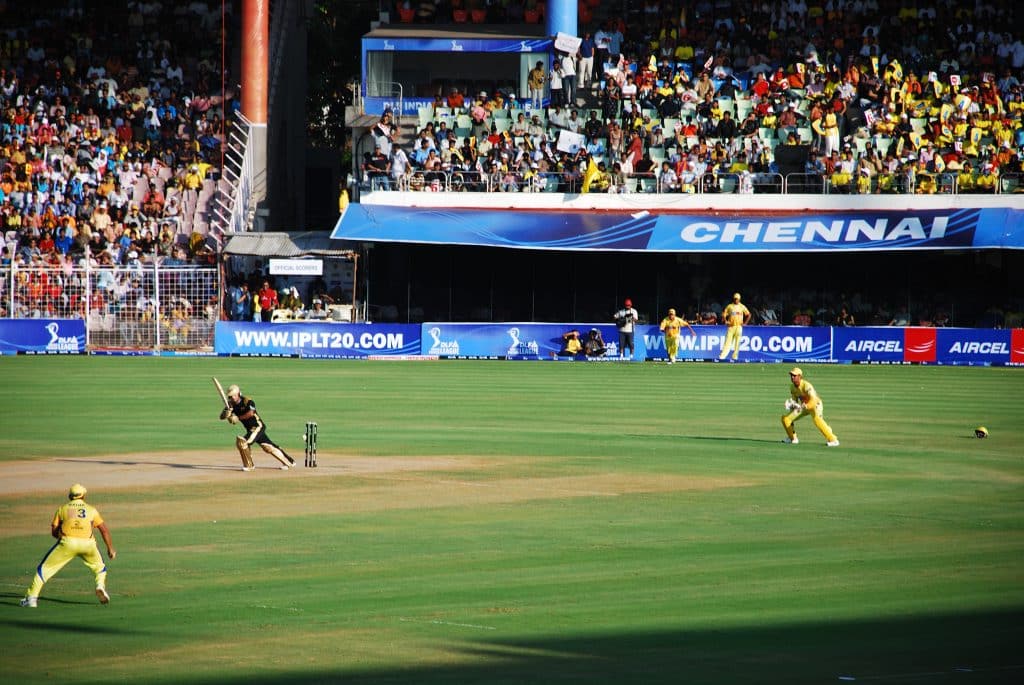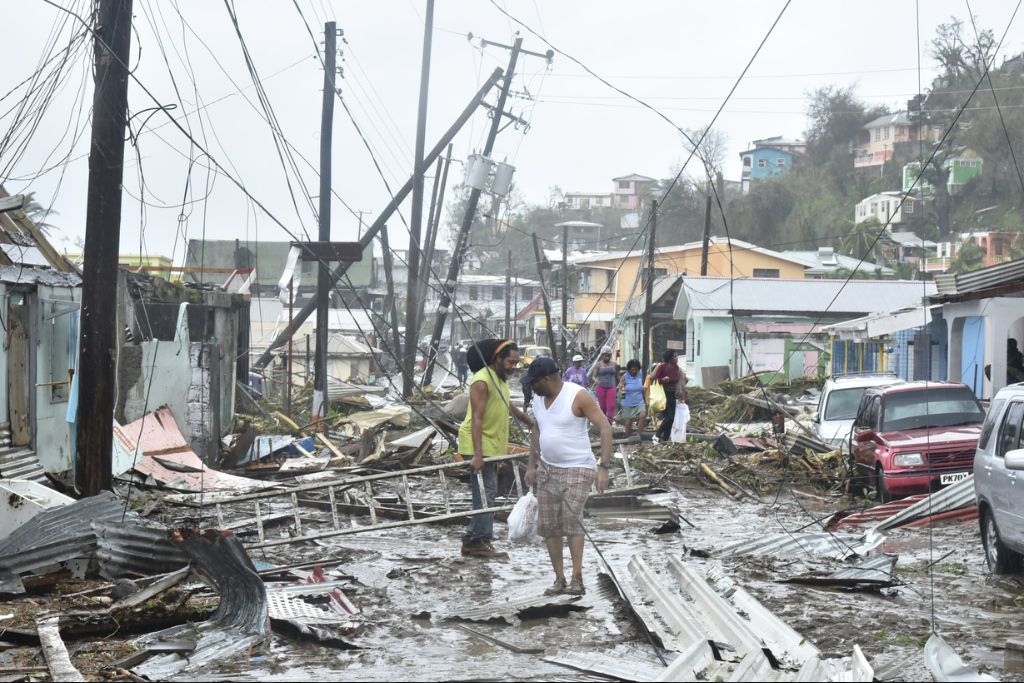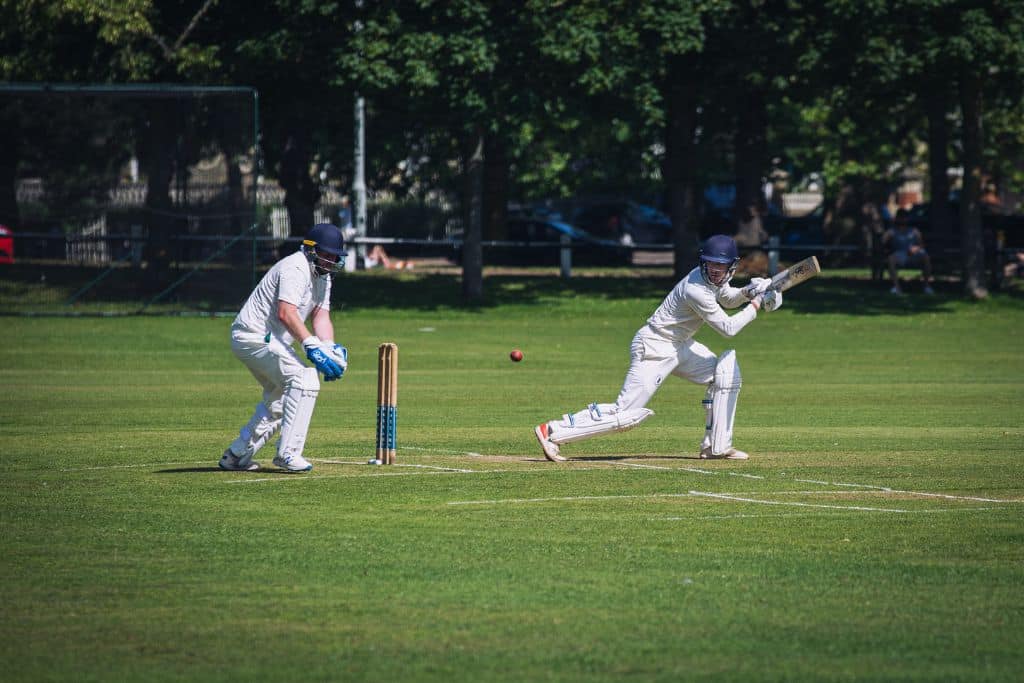Cricket is the world’s second-most popular sport, beloved by over two billion people. As an outdoor sport, cricket has been facing challenging conditions in the face of a rapidly worsening climate crisis.
—
In its Game Changer report published in 2018, Climate Coalition said that “of all the major pitch sports, cricket will be the hardest hit by climate change.” During last year’s men’s Cricket World Cup in India, extreme heat and elevated humidity affected 20 out of the 47 matches. “It is not ideal and everyone knows that,” said Indian captain Rohit Sharma, referring to the challenging weather conditions.
The debilitating conditions of last year’s World Cup are raising concerns for another potential climate threat to the upcoming Summer World Cup, set to take place this June in the US and West Indies.
The Physical Toll on Players
While cricket may not be the most physically intense game, it is the longest, with matches lasting up to eight hours. The intense weather conditions make players more susceptible to poorer performance and can also impair the judgement of umpires.
During the 2023 World Cup tournament in Mumbai, India, Australia’s star player Glenn Maxwell collapsed on the ground in the middle of his innings, with his body spasming from debilitating muscle cramps. That day, Mumbai recorded a temperature high of 34C and 84% humidity levels.
“I haven’t really done a whole lot of high-intensity exercise in the heat. It certainly got a hold of me today,” the player said.
The American College of Sports Medicine recommends halting continuous exercise long before these conditions are reached; a hot, still, and sunny day of 30C and 35% humidity is the college’s “black flag” threshold, at which point sporting events should be cancelled.
“When there is extreme humidity, the air tends to become thicker and it feels like you are moving through a steam bath, making it difficult to move and breathe,” said Sai Venkata Sarath Chandra, a climate and heat health research associate for the Indian Institute of Technology.
The Hit for Six report on the impacts of climate change on cricket, which for the first time combines climate science and heat physiology, reported: “A day at the crease can be compared to running a marathon wearing helmet, gloves and pads. And when the air temperature is higher than skin temperature – typically around 33-35C – only sweat can stop the body from heating up. Protective clothing and high humidity make this less effective.” Indeed, thick pads, gloves, and helmets are known to impede ventilation, causing players to experience health effects like heat exhaustion, stress, fainting, and vomiting.
To ease the strain of heat on his players, Adil Mehmood, a Hong Kong Cricket Club coach who previously played for Hong Kong’s National Cricket Team, adopted different strategies. “We encourage our players to take sufficient rest and ensure they are hydrated well before the match starts. We have also introduced water breaks in our matches to make it easier for the players in the hot weather,” he told Earth.Org.
Climate Impact on the Game
According to the aforementioned report, major cricket league nations are facing a decrease in their freshwater availability in rivers and lakes, and the game’s adaptation and team strategies need to change to suit the changing pitch conditions. A dry pitch impacts the consistency and bounce of the ball, affecting the bowler’s ability to take wickets, while higher temperatures result in cracks on the pitch, making it uneven and unpredictable for batsmen.
Climate change-related water shortages and droughts are adding pressure on national cricket authorities and governments from India to South Africa to minimise water use. Indeed, a standard cricket stadium requires 270,000–300,000 litres per week to keep the ground in a healthy and safe condition. In the summer months, the amount is significantly higher.

Based on safety-related heat stress indices and erratic rainfall, more games are also being postponed and rescheduled to cooler times of the day.
In Hong Kong, for example, the unpredictable sub-tropical climate poses various challenges to players. “Hong Kong’s weather has been very unusual lately, the weather is very hot one day and it rains very heavily the next. Conditions like poor visibility, fog, heavy rain, and extreme heat have caused many matches to be postponed indefinitely, especially last month,” explained Mehmood.
More on the topic: Cricket and Climate: Exploring the Environmental Implications of the Indian Premier League
The West Indies’ Climate Peril
The upcoming T20 World Cup co-host West Indies, in the Caribbean, is no stranger to extreme weather events. In September 2017, Hurricanes Irma and Maria, both category 5 hurricanes, devastated parts of the Eastern Caribbean., causing significant damage to 27 cricket grounds. Leading insurer Lloyds of London reported a US$1.1 billion net loss from Hurricane Maria and a $2.1 billion net loss from Hurricane Irma due to the extraordinary level of damage incurred.
“The facilities were damaged – a lot. “Some playing fields are no longer of use at this stage because of soil erosion, water damage. There are some back up and running where we can play cricket. There is cricket going on but it’s not on a large scale. Some players migrated because they suffered damage to their house – it was difficult and it has impacted every aspect of life,” said Liam Sebastian, who plays first-class cricket for the Windward Islands within the West Indies, in the aftermath of Hurricane Maria.
“Climate change is an existential threat for the West Indian community as the team seeks to re-establish itself at the pinnacle of the cricketing pyramid,” said Keith C. Mitchell, the Prime Minister of Grenada.

Unfortunately, the situation is only expected to worsen. According to the Intergovernmental Panel on Climate Change (IPCC), warmer global temperatures will likely fuel hurricanes of greater intensities and lead to heavier rainfall.
In 2020, the Global Climate Risk Index ranked Bangladesh and Pakistan, two countries in which cricket is highly popular, seventh and eighth, respectively, on the list of countries most vulnerable to climate change. The situation in India is not looking much more encouraging either, with climate scientists predicting an erratic pattern in the future, with intense precipitation, prolonged drought spells, extreme heat, and rainfall.
To date, Australia is the only major league cricket nation that has published guidelines for playing in extreme heat conditions. Their policies include recommendations for appropriate clothing, provision of water and ice, and player rest and rotation.
The International Cricket Council (ICC) has yet to join the UN Sports for Climate Action Framework, which FIFA is part of. To ensure a sustainable future and protect cricket players around the world, it is time for the ICC to develop a comprehensive climate safety strategy for its member countries.
As Ovais Sarman, the Deputy Executive Secretary of UNFCCC Secretariat, said: “No one is safe from the impacts of climate change and sports organisations and sporting communities are already being affected. Climate action is therefore urgent.”
This story is funded by readers like you
Our non-profit newsroom provides climate coverage free of charge and advertising. Your one-off or monthly donations play a crucial role in supporting our operations, expanding our reach, and maintaining our editorial independence.
About EO | Mission Statement | Impact & Reach | Write for us


















